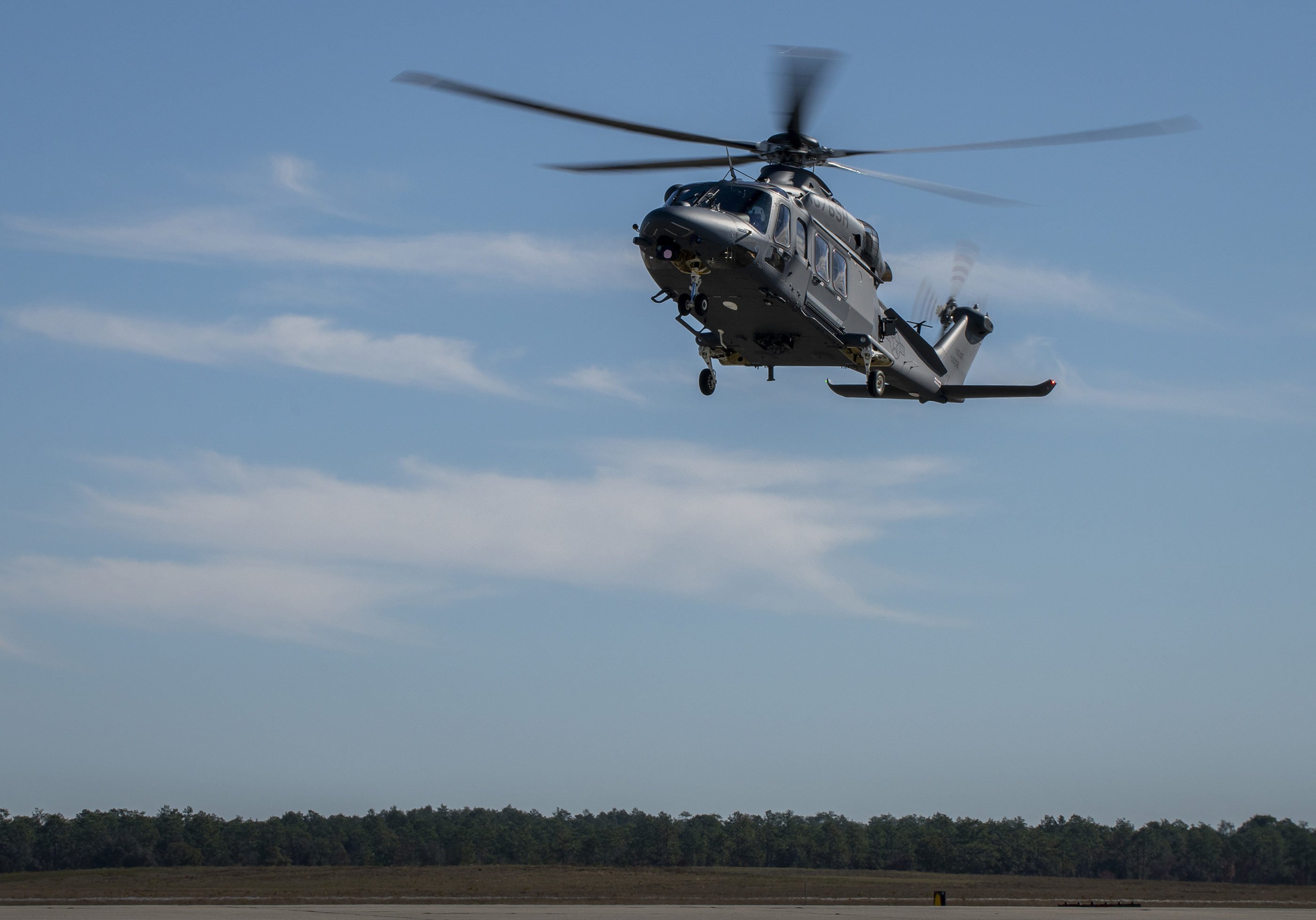Inaccurate airspeed readings caused the delay in Federal Aviation Administration (FAA) certification of the U.S. Air Force’s new MH-139 Grey Wolf helicopter that forced a pause in funding for the service’s Huey replacement.
The Air Force’s fiscal year 2022 budget request to Congress contained no funding for the MH-139, built by Leonardo Helicopters in Philadelphia and militarized by prime contractor Boeing in the same city. Based on Leonardo’s AW139, the MH-139 will replace the fleet of 63 UH-1N Hueys the Air Force uses to guard nuclear missile fields in the Midwest and for VIP missions in and around Washington, D.C.

Carlos Rodgers, secretary for budget for the office of the assistant secretary of the Air Force for financial management, said during a budget rollout press conference in May that the service is “deferring the procurement of the MH-139 until ’23 . . . due to a FAA certification issue that we have experienced.”
Boeing says the issue was caused by inaccurate readings from an airspeed sensor and that the problem has been resolved by tweaking an adjacent fairing.
“When performing certain maneuvers during joint development test of the MH-139 configuration, pilots discovered inaccurate readings by one of the airspeed sensors,” a Boeing spokesperson told Vertical in an email. “The approved solution was making an adjustment to a nearby fairing that solved the problem. The team has worked hard to implement this solution quickly and safely, in alignment with the Air Force, and we’re currently continuing to validate the solution with the FAA through the test program.”
The Air Force budgeted $194 million for eight of the aircraft in the current fiscal year. Two aircraft are in a joint flight test program with Boeing and Air Force pilots at Eglin Air Force Base in Florida. Flight testing is scheduled to continue through late 2022 with a decision on whether to enter low-rate initial production, called Milestone C, by the end of 2021.
The Air Force plans to buy 84 of the helicopters under a $2.38 billion deal to replace the UH-1N fleet in which Boeing is the prime contractor.
Darlene Costello, acting assistant secretary of the Air Force for acquisition, technology, and logistics, said the service is working with Boeing to minimize schedule delays.
“While technical issues have delayed the FAA certification, we are confident Boeing can make the necessary changes to minimize schedule delays going forward,” Costello told the House Armed Services subcommittee on tactical air and land forces on June 30.









